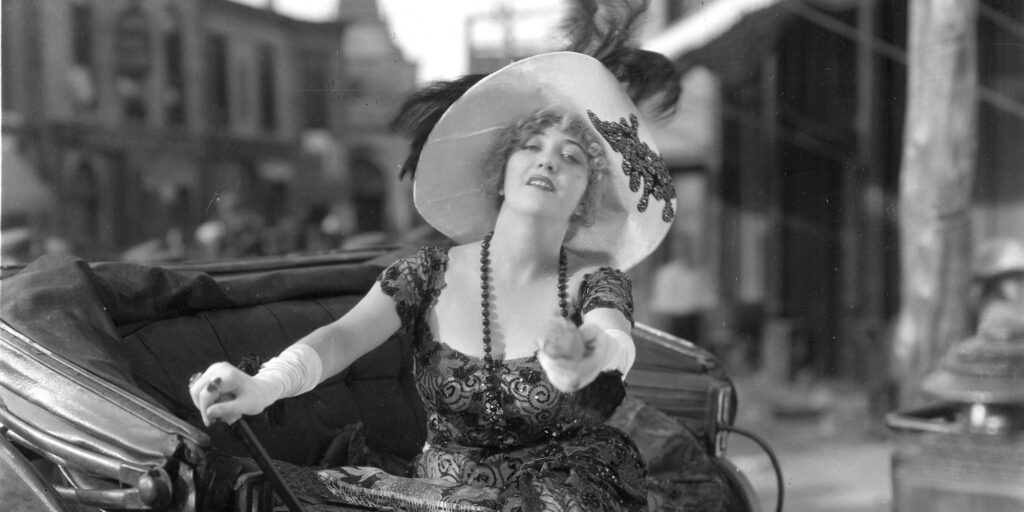ROUBEN MAMOULIAN: A TOUCH OF DESIRE

Curated by Ehsan Khoshbakht
Rouben Mamoulian’s unusually experimental approach to filmmaking added vitality, depth and movement to early Hollywood sound film. Ironically, the man whose unfettered camerawork, symbolic editing and eloquent imagery contributed greatly to the visual grammar of 1930s cinema through films such as City Streets and Queen Christina started out in the theatre world.
Mamoulian was born in Tbilisi to an art-loving Armenian family and he studied or worked in Moscow, Paris, London, Rochester and New York before arriving in Hollywood. There, his experiments between 1929 and the mid-1930s were wide-ranging. There’s a sense of euphoria and hypersensitivity in his filmmaking. That restlessness slackened in the mid-1930s and he tried to compromise more with studio styles. Censorship forced all his early films out of circulation – too many sexual innuendos and lacy negligees – and that vacuum was a factor in historical neglect of his rightful place in American cinema, although Tom Milne’s exceptional 1969 monograph acclaimed him convincingly as a giant.
Mamoulian was evidently familiar with and largely influenced by Soviet masters. In a sense, his films brought some of Sergei Eisenstein’s ideas to the idiom of musical film, even if only less than half of his films were actually musicals. Look at his first film, Applause: a dancer, sitting by her daughter’s bedside, sings a popular song as the daughter says her prayers. The two voices mix in counterpoint; Mamoulian combines sacred and profane into a duet. It’s one of the key moments of his cinema, made possible through technological advances. In his words the “only worthwhile innovation is the one coming from artistic necessity”. That’s why most of the time he worked more like a painter (Blood and Sand) or musician (Love Me Tonight) rather than the conventional definition of a filmmaker.
Mamoulian loved doubles. Even beyond Dr. Jekyll and Mr. Hyde, his images found their duplicates. Shadows of people, extensive use of mirrors, statues and paintings sat harmoniously alongside his fascination with masquerades and disguises. He was a fetishist; legs and lingerie are practically visual motifs in his films. He also loved cats, and their cameos served as standins for the filmmaker.
Between 1942 and 1957 he made only three films. He tried to come out of unofficial retirement with Cleopatra in 1963 but, dissatisfied with the production, quit not only the production but cinema itself. Yet there was never a hint of bitterness about the way he had been gradually sidelined. He said “Everything a filmmaker does is for life’s sake”. His cinema attests to that, a cinema of satin and silk, with a touch of desire.
Ehsan Khoshbakht
Program
Friday 23/06/2023
14:30
Cinema Lumiere - Sala Scorsese
ROUBEN MAMOULIAN – LOST AND FOUND
ROUBEN MAMOULIAN – LOST AND FOUND
Ehsan Khoshbakht
Saturday 24/06/2023
16:00
Jolly Cinema
The Flute of Krishna / APPLAUSE
The Flute of Krishna / APPLAUSE
For The Flute of Krishna: flute accompaniment by Stephen Horne
Saturday 24/06/2023
21:30
Jolly Cinema
SILK STOCKINGS
SILK STOCKINGS
Sunday 25/06/2023
11:00
Jolly Cinema
DR. JEKYLL AND MR. HYDE
DR. JEKYLL AND MR. HYDE
Ehsan Khoshbakht
Sunday 25/06/2023
16:30
Jolly Cinema
CITY STREETS
CITY STREETS
Monday 26/06/2023
11:00
Jolly Cinema
LOVE ME TONIGHT
LOVE ME TONIGHT
Ehsan Khoshbakht
Monday 26/06/2023
21:30
Jolly Cinema
BLOOD AND SAND
BLOOD AND SAND
Tuesday 27/06/2023
11:00
Jolly Cinema
WE LIVE AGAIN
WE LIVE AGAIN
Ehsan Khoshbakht
Tuesday 27/06/2023
16:30
Jolly Cinema
THE SONG OF SONGS
THE SONG OF SONGS
Wednesday 28/06/2023
11:20
Jolly Cinema
GOLDEN BOY
GOLDEN BOY
Wednesday 28/06/2023
16:30
Jolly Cinema
QUEEN CHRISTINA
QUEEN CHRISTINA
Wednesday 28/06/2023
21:30
Jolly Cinema
CITY STREETS
CITY STREETS
Thursday 29/06/2023
09:15
Jolly Cinema
RINGS ON HER FINGERS
RINGS ON HER FINGERS
Thursday 29/06/2023
11:00
Jolly Cinema
BLOOD AND SAND
BLOOD AND SAND
Thursday 29/06/2023
16:15
Jolly Cinema
THE MARK OF ZORRO
THE MARK OF ZORRO
Friday 30/06/2023
11:10
Jolly Cinema
SILK STOCKINGS
SILK STOCKINGS
Friday 30/06/2023
21:30
Jolly Cinema
QUEEN CHRISTINA
QUEEN CHRISTINA
Saturday 01/07/2023
11:40
Jolly Cinema
APPLAUSE
APPLAUSE
Saturday 01/07/2023
21:30
Jolly Cinema
WE LIVE AGAIN
WE LIVE AGAIN
Sunday 02/07/2023
15:45
Arlecchino Cinema
LOVE ME TONIGHT


